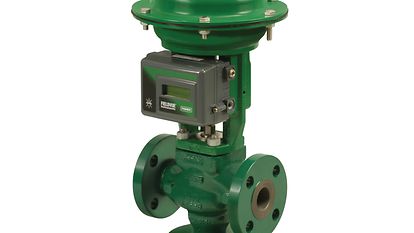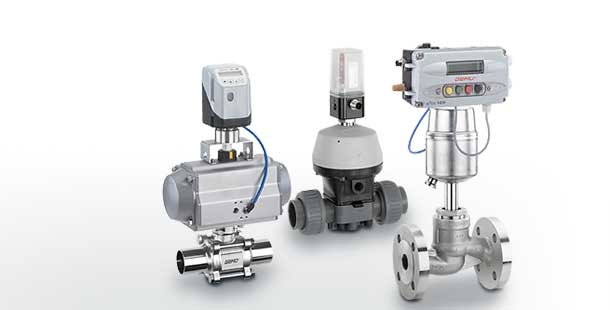Optimizing System Control with High-Performance Control Valves
Optimizing System Control with High-Performance Control Valves
Blog Article

Maximize Power Cost Savings and Comfort With Advanced Structure Automation Controls
In the world of modern design and facility management, the integration of advanced structure automation regulates stands as a crucial improvement. The convergence of technology and sustainability has actually birthed a new age where power performance, convenience optimization, and operational streamlining are no much longer far-off goals however obtainable truths. By using the power of automation, structures can adjust, react, and evolve in methods that were as soon as unbelievable. The potential for substantial energy financial savings and enhanced convenience is not just an assurance but a possibility waiting to be satisfied. This standard change in building administration holds the crucial to unlocking a globe where ecological conscientiousness and passenger wellness sympathetically exist side-by-side within the wall surfaces of our structures.
Power Effectiveness Benefits
Energy effectiveness advantages can dramatically lower energy consumption and functional costs in structures. By carrying out energy-efficient methods and modern technologies, building owners and drivers can accomplish considerable cost savings while also adding to environmental sustainability. One of the primary benefits of boosting energy performance in structures is the reduction of energy bills. Energy-efficient systems, such as sophisticated building automation controls, can optimize the use of resources like heating, air conditioning, and lighting, resulting in lower energy expenditures gradually.
Additionally, boosted energy performance can prolong the life-span of building equipment and systems. By operating more efficiently, cooling and heating systems, lighting fixtures, and various other building elements experience much less damage, causing reduced maintenance and replacement prices. In addition, energy-efficient structures often command higher residential property worths and rental prices, providing lasting monetary benefits to proprietors.
In addition, energy efficiency can enhance occupant convenience and productivity. Appropriately managed interior environments with optimum illumination and thermal problems create a more helpful and pleasurable work area, resulting in boosted employee satisfaction and efficiency. Overall, the power effectiveness advantages related to sophisticated building automation controls are complex, encompassing price financial savings, ecological stewardship, and passenger wellness.
Enhanced Convenience Control
Enhancing comfort control in building settings requires a sophisticated combination of sophisticated automation systems for optimal passenger wellness. By making use of sophisticated structure automation controls, facilities can customize the indoor setting to satisfy the certain requirements and choices of residents. These systems make it possible for exact policy of illumination, ventilation, and temperature level, producing a comfortable and efficient ambience. Owner contentment and efficiency are very closely connected to thermal convenience, making it vital to have systems in position that can adapt to altering problems in real-time.
Enhanced comfort control surpasses basic temperature level modifications. It includes features such as tailored settings, tenancy sensing units, and natural light use to produce a responsive and dynamic setting. By integrating these advanced controls, structures can not only boost comfort however additionally improve power efficiency by optimizing system operations based on real occupancy and usage patterns. Inevitably, focusing on owner comfort via innovative automation systems brings about a much more satisfying and much healthier interior setting.
Functional Efficiency Improvements

Moreover, the execution of real-time monitoring and analytics tools enables structure operators to determine power inadequacies and functional anomalies quickly. By constantly monitoring energy use patterns and system efficiency metrics, changes can be made in real-time to optimize energy consumption and ensure peak operational effectiveness. control valves. Furthermore, integrating need action techniques right into structure automation controls can even more boost operational effectiveness by dynamically changing energy use based on grid problems and prices signals
Indoor Climate Optimization
Reliable indoor climate optimization is an essential facet of building automation controls, ensuring passengers' convenience and wellness while making the most of energy savings. By utilizing advanced sensors and controls, developing automation systems can constantly readjust and keep an eye on temperature level, moisture degrees, air top quality, and air flow to develop an ideal interior atmosphere. Preserving constant and comfortable problems not just boosts passenger satisfaction but additionally enhances performance and general health.
Interior environment optimization likewise plays a crucial duty in power effectiveness. By fine-tuning air conditioning, heating, and ventilation systems based on real-time information and tenancy patterns, building automation controls can considerably lower power usage - control valves. Executing approaches such as demand-controlled ventilation and thermal zoning can help minimize energy waste while making certain that each area of the building receives the necessary conditioning.

Lasting Environment Development
Structure automation manages not just optimize indoor environment problems for energy performance and resident convenience but likewise lay the structure for developing a lasting setting via strategic management of resources and systems. By integrating sophisticated building automation technologies, such as sensing units, actuators, and smart software program, centers can keep an eye on and readjust power use in real-time to reduce waste and decrease their carbon impact. These systems enable predictive maintenance, identifying potential issues prior to they escalate and enhancing tools efficiency to improve durability and performance.
Moreover, lasting environment production extends beyond energy administration to incorporate water preservation, waste reduction, and indoor air quality improvement. Structure automation controls can manage water use, discover leakages, and make certain appropriate garbage disposal techniques, adding to total sustainability efforts. Additionally, by keeping track of and controlling air flow and filtration systems, these modern technologies boost occupant wellness and performance while reducing energy intake related to cooling and heating procedures.
Final Thought
Finally, progressed building automation regulates deal significant advantages in terms of energy savings, convenience control, operational effectiveness, indoor environment optimization, and producing a sustainable environment. By carrying out these controls, structures can accomplish optimum efficiency while minimizing power usage and enhancing resident convenience. It appears that using innovative automation technology is vital in improving building efficiency and creating a much more sustainable future.
Energy effectiveness benefits can considerably minimize energy consumption and operational costs in structures. Generally, the power efficiency advantages connected with advanced structure automation controls are diverse, incorporating expense financial savings, ecological stewardship, and passenger wellness.
Furthermore, integrating demand feedback approaches into building automation controls can further boost functional efficiency by dynamically changing power usage based on grid problems and pricing signals.
Structure automation manages not only maximize interior climate conditions for power performance and straight from the source passenger convenience however likewise lay the structure for creating a sustainable atmosphere via tactical monitoring of systems and sources.In conclusion, advanced structure automation controls offer substantial benefits in terms of energy cost savings, comfort control, operational efficiency, go to the website interior environment optimization, and developing a lasting environment.
Report this page